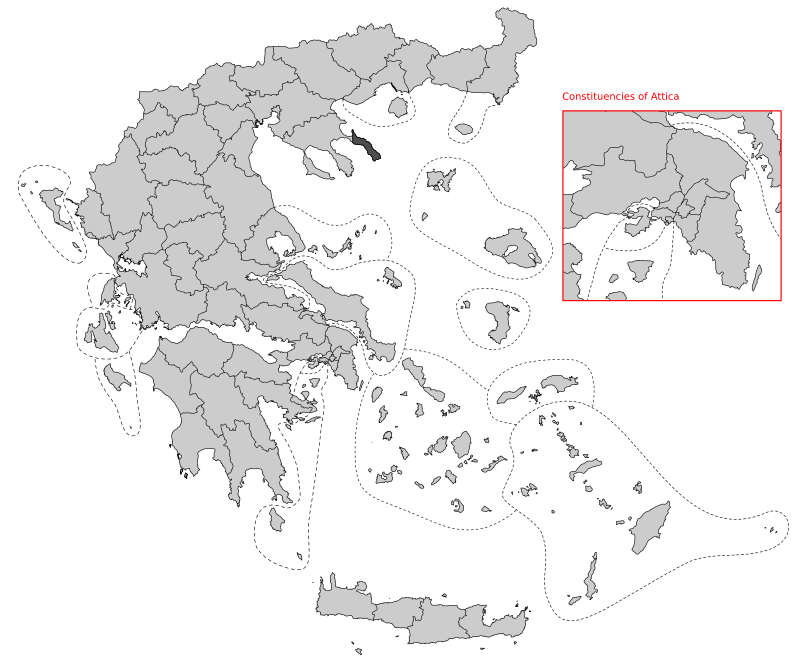Electoral Constituency | Definition, Factors, Types & Problems of Delimitation

What is an Electoral Constituency?
An Electoral Constituency is simply an electoral district or an area from which one or more members of Representatives are elected into political offices. The division of a country into constituency is referred to as delimitation and it makes for equitability in the allocation of parliamentary seats.
What is Delimitation?
Factors Influencing the Delimitation of Constituencies
The following are factors influencing constituency delimitation.
1. Administrative Convenience
The need to consider convenience, has often led to the merging of some local areas that are near to one another.
2. Population
A high density area may press for a separate constituency even when the area is not that large.
3. Minority Interests
Some areas have been carved out as a constituency, not for their large areas or population, but most importantly to satisfy the interest of minorities.
4. Geographical Factors
This relates to the topography of the area. A constituency area must be considered in relation to its accessibility.
5. Historical and Cultural Background
People with same historical background and of course culture should be grouped together.
6. Number of Seats Available
The number of seats available and to be allocated to each constituency can influenced delimitation.
Problems of Delimitation
Problems affecting delimitations of constituencies are;
- Inacurate population census – Most of the census conducted in some countries e.g. Nigeria, have not been reliable and can negatively affect constituency delimitation.
- Inaccessible areas – The riverine areas of Nigeria are not easily accessible and so cannot produce a realistic delimitation.
- Gerrymandering – The leaders may construct the electoral district in such a way as to give the majority party more representations in the parliament.
- Ethnicity factors – Every ethnic group might want to have its own constituency irrespective be of the population or size.
- Grouping together of different Interests – Problem may also arise when trying to group the majority tribes with minority tribes. The minority group may not cherish such idea.
- Dearth of skilled manpower – They are not there to actually carry out the delimitation of constituencies.
Types of Electoral Constituency
Constituencies can be grouped into two major types, they include – single member constituency or district system and multi-member constituency.
#1 – Multi Member Constituency
Multi member constituency demands the election of two or more members of the legislature in every election. In this system of election, a voter may be entitled to two or more votes.
However, the number of votes of an electorate depends on the number of candidates to be elected from the constituency. This system generally agree with provisions for minority representation and encourages the multiplication of groups in a legislature, making it difficult for any group to command a majority.
#2 – Single Member Constituency
Single member constituency or district system requires the election of only one member into the legislature. This system is done in every election. Every voter is only entitled to one vote – One Man, One Vote.
Advantages of Single Member Constituency
Merits of single-member district includes;
- Close touch with the constituency – This system enables the elected member to keep in close touch with his/her constituency.
- Simple and Economical – This system is simple, less costly and Economical, especially for the candidates.
- Democratic – It is more democratic simply because the poor candidates are not at disadvantages as they would be in large constituency.
- Talents from the grassroots – Itbos more likely to encourage local talents than the larger multi-member constituency. This is because men of moderation will feel more confidence where the constituency is small and their local influence counts.
- Stable majority – The system tends to provide a more stable majority in a legislature than the multi-member district system.
- Active interest in the political process – It encourages people in the community to take active interest in the political process.
- Areas with return members to the legislature – The constituency must be small enough to enable candidates to be known in a simple and genuine way.
Disadvantages of Single Member Constituency
Demerits of single member district system are listed below.
- Representation of local interests – It leads to the choice of men who regard themselves as representatives of local interests rather than of the country as a whole.
- Gerrymandering – It increases powerfully the temptation of legislative majorities to gerrymander, the state, i.e. to construct the electoral district in such a way as to give the majority party more representatives than its voting strength entitles it to.
- Distortion of the system – This could result in the election of the candidates, (through plurality system) disliked by the majority of voters. It can distort the system.
- The minorities – They may not be adequately represented in the legislature.